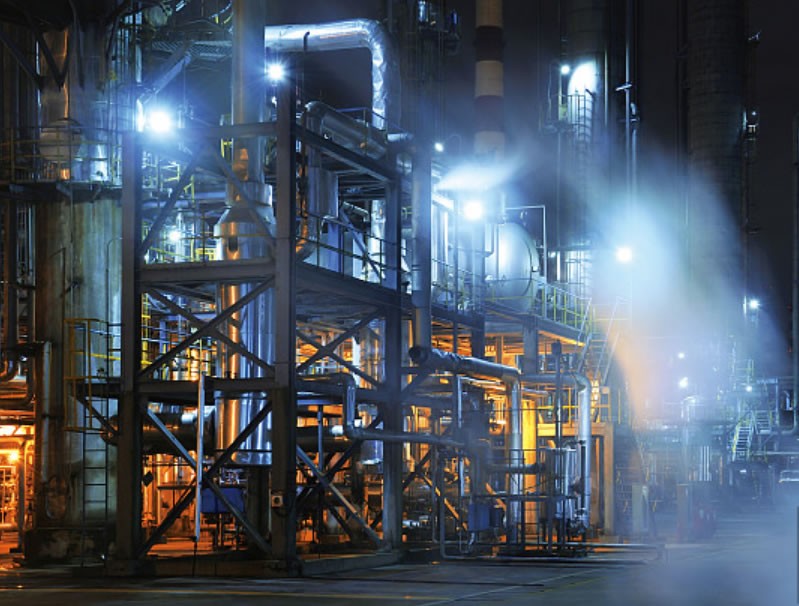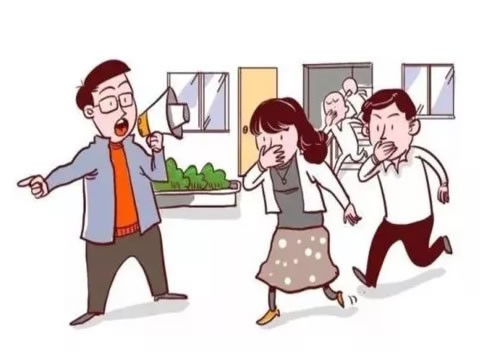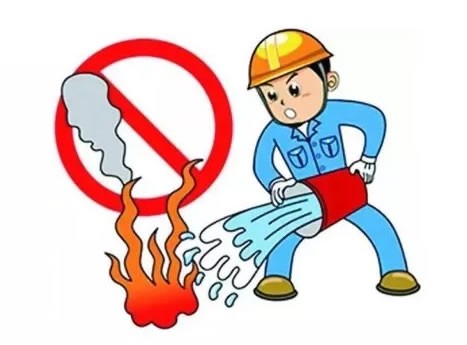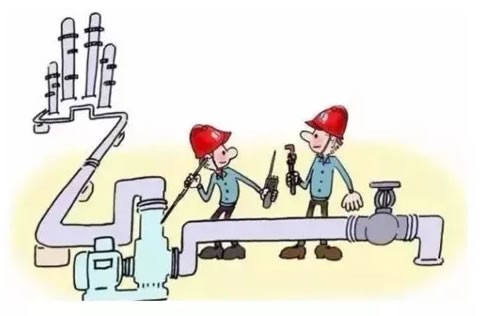
ABOUT
Hanhai Opto-electronic is a major scientific research achievement transformation institution of the Hefei Institute of Physical Science, Chinese Academy of Sciences.
Characteristics of Hazardous Chemicals Leakage Accidents

01 Strong suddenness, large leakage of poison
Leakage accidents usually happen suddenly, often at unexpected times and places. This suddenness is related to the particularity of hazardous chemical products and their production processes.
02 Wide range of hazards and multiple ways of harm
After an accident occurs, poisons will spread to the air, water, ground and objects in various forms, causing large-scale pollution. There are many ways to harm. Toxic substances form clouds and spread to the surroundings, especially in the downwind direction, causing large-scale pollution and injury. The effect is enhanced.
03 Detection is not easy, and rescue is difficult
There are many types of dangerous goods, and it is difficult to accurately detect what kind of substance caused it. At the same time, leakage and explosion may form a small environment of "high temperature, high pressure, oxygen deficiency, and toxic", which brings great difficulty to rescue, and it is very difficult for individuals. The requirements for protective equipment and equipment are relatively high.
04 Pollution of the environment and difficulties in decontamination
After an accident, toxic and harmful substances can pollute the air and the surface of objects, and even toxic liquids can penetrate into the ground and cause deep pollution. Once pollution is formed, it is very difficult to thoroughly decontaminate the contaminated area.
05 Social involvement and wide coverage, great political influence
In order to control and eliminate serious and serious dangerous goods accidents. For the serious harm caused, rescue operations will inevitably focus on cutting off (controlling) the source of the accident, alerting, and evacuation. These actions are bound to cause imbalances in the lives of local areas or residents, and even chaos in social order, and even have a negative impact on the international community.
Causes of Hazardous Chemicals Leakage
01 Flammable gas leakage
The external leakage of combustible gas and the air form an explosive gas mixture, which is easy to cause explosion accidents. Flammable gas leakage has the following situations:
Leakage at the static and dynamic seals of the equipment.
Corrosion and leakage of equipment piping.
The water seal was leaking due to water cut and no water was added.
Leakage caused by defective or broken equipment pipeline valves.
02 System negative pressure, air is mixed with flammable gas
Due to the negative pressure of the system, the flammable gas mixture is caused by the following reasons:
The system stops, and the negative pressure is caused by the temperature drop after stopping, and air is sucked in from the open port.
The system stops water, after the water stop, the sealing water loses its function due to leakage and causes air inhalation.
Operation error, incomplete or malfunctioning alarm interlocking device, resulting in unbalanced gas pumping and negative pressure, inhaling air from open or leaking places.
The gas inlet pipeline is blocked by debris, crystal water or water, causing negative pressure, and air is sucked in from the open or leaking place.
Air is used for pressure test and leak test. The combustible material in the system is not cleaned up, and the blind plate is not added, which causes the combustible gas to mix with the air.
03 The oxygen content exceeds the standard during system production
Excessive oxygen content may occur in many places, but it is mainly concentrated in the gas generating site. It is usually caused by operating errors, system defects, illegal operations, shutting off oil and gas, or malfunctioning of the alarm interlocking device. Excessive oxygen content may cause the range of gas-generating parts to fall off, change, and compress, etc., which should be paid attention to.
04 system gas
There are two main situations of system gas leakage:
The high-pressure string is low-pressure, forming an overpressure explosion.
Air and combustible gas strung together to form a chemical explosion.
The former situation is mostly caused by operational errors and low-voltage lack of safety accessories or failure of safety accessories, such as the explosion of the synthetic high-pressure string low-pressure liquid ammonia tank, the explosion of the synthetic high-pressure string low-pressure regeneration system, and so on. The latter situation is mostly caused by the template plugging error, the valve is used to replace the blind plate or the operation error is caused. For example, if a certain equipment is on fire, the inside is air, because the system is not isolated by the blind plate, flammable gas is leaked through the valve or opened by mistake. The valve allows flammable gas to enter the hot equipment and mix with air to cause an explosion.
05 Illegal Fire
He has not obtained a hot work permit, has no complete consciousness, and fires himself privately.
Although the hot work permit was obtained, the replacement was not thorough or the sampling method was wrong, and the analysis result was wrong.
Inadequate consideration of fire safety measures and incomplete safety measures.
The hot fire system is not completely isolated from other systems.
The hot work permit changes the safety measures or changes the fire time without permission.
Does not replace hot fire or does not maintain positive pressure hot fire.
Emergency measures for leakage of hazardous chemicals
Evacuation and isolation
In the event of leakage during production, storage and transportation, the spread must be prevented first, and then irrelevant personnel must be evacuated to isolate the leakage contaminated area. If it is a large amount of flammable and explosive chemical leakage, you must call "119" as soon as possible.

Cut off the source of fire
Cutting off the fire source is particularly important for chemical spill handling. If the spill is flammable, all fire sources in the spilled and contaminated area must be eliminated immediately.

Self-protection
Participants in the spill handling should have a full understanding of the nature and reaction characteristics of the leaked chemicals, and deal with them in high places and upwinds. They must act strictly alone and must have guardians around them.

Leakage control
If leakage occurs during production and use, under unified command, the chemical leakage should be controlled by closing the relevant valves, cutting off the equipment and pipelines connected to it, stopping the operation, or changing the process flow. In addition, it is necessary to prevent the leakage from spreading and damage the surrounding buildings, vehicles and people. In case the leak cannot be controlled, the leakage must be handled in time and closely monitored to prevent fire and explosion.

Disposal of spills
Gas leakage should be timely and reasonably ventilated. A small amount of liquid leakage can be treated with sand or other non-combustible adsorbents. The solid leakage should be collected with appropriate tools, and then the ground should be washed with water.

How to escape the leakage of hazardous chemicals
1. In the event of leakage, on-site operators should immediately stop the operation and quickly evacuate the leakage contaminated area. If the leaked material is flammable and explosive, when possible, when evacuating, promptly remove the explosives in the accident area, extinguish the fire, and cut off the power supply. Personnel have no time to evacuate, and when an explosion occurs, they should lie down on the spot.
2. When evacuation, you must figure out the direction of the poisonous gas flow, evacuate to the upwind side, and do not follow the direction of the poisonous gas flow.
3. When evacuating, use a wet towel, wet mask, etc. to cover your mouth and nose to protect the respiratory tract.
4. When a large number of leaks occur, don't panic, don't crowd, ask the audience to direct, especially when there are many people, don't panic, don't yell, and evacuate calmly, calmly, and orderly.
5. In case of poisonous gas leakage, the best treatment measures should be taken in time according to the different ways of poisonous substances in the treatment after being invaded by dangerous chemicals.
Invasion through the skin: immediately remove the contaminated clothing, rinse with a large amount of running water, and pay attention to washing the contaminated hair. If chemicals splash into the eyes, rinse well in time for no less than 10-15 minutes. Avoid flushing with hot water.
Invasion through the respiratory system: immediately send to a place with fresh air, rest quietly, and keep the respiratory tract unobstructed.
Invasion through the digestive system: Induce vomiting sooner or later. If you accidentally swallow corrosive poisons, oral milk, egg white, vegetable oil, etc. can be taken to protect the digestive tract.
6. After the patient is rescued from the poison site, if the heartbeat or breathing stops, cardiopulmonary resuscitation should be performed immediately. When artificial respiration is performed on a poisoned person, the rescuer should take precautionary measures. For example, before performing mouth-to-mouth artificial respiration on a person with hydrogen sulfide poisoning, cover the mouth and nose of the person with a salt solution soaked in cotton or a handkerchief.
TEL:400-055-1239 (9:00~17:00)
MAIL:lisghanhai@gkhhlaser.com
ADDR:302 Floor, Building 5, No. 18, Kechuang 13th Street, Beijing Economic and Technological Development Zone
